
The A Place to Be-Come project, as it was mentioned in a previous article, is implementing a co-design process with local stakeholders to open a community hub in the central neighbourhood of Seraing. The building that will accommodate the centre was once an ancient maison du peuple, a social and cultural venue built by a socialist cooperative at the beginning of the last century. Enhancing citizens’ participation in the improvement of their neighbourhood and paving the way for their empowerment is one of the main goals of the project, which biggest challenge is to foster social cohesion while improving the urban environment.
During the second year of the implementation process, which was hindered by the pandemic and the resulting limitations in social contacts and exchanges, the management team capitalised on the slowdown of activities and started looking for experiences and case studies in Belgium and Europe from which to get inspiration and knowledge.
On 20th October 2020, Hub Créatif and Liège Creative, two platforms designed for encouraging the debate among different stakeholders and disseminating innovative ideas, organised with Arebs 1] a conference on “Tiers lieux, espaces de tous les possibles par et pour les Sérésiens?”,[2] with the aim to discuss the opportunity and the implications of developing a third place[3] in Seraing, on the basis of similar experiences. If the concept of third place is still blurred and evolving, the debate allowed to explore the conditions on which a space where citizens can build relationships, develop new ideas, be empowered and co-create services, can emerge in Seraing. Three main challenges were identified: first, the importance of defining a strategy to assure the inclusiveness and accessibility of the place, including through its aesthetics. Second, establishing the active role of citizens in the implementation of the new space, its programme and mission. And third, creating a strong partnership between public actors, private actors and citizens, with a medium-long term sustainability in mind.
Internal debates on how best to tailor a community centre around local characteristics, needs and constraints continued during the first phase[4] of the collaborative process for the design of one of two community centres, the Maison du Peuple. Some issues of method and the need to foresee the main risks associated with this kind of process persuaded the management team that further investigation was necessary and some inspiration could be found in similar projects, in particular projects with a focus on how to promote civic engagement, create places where people can meet and share and facilitate access to services. Turin was immediately considered as particularly interesting as a case study and destination for a field visit, for two reasons. First, the city of Turin promoted and implemented the UIA funded project Co-City, which aimed to foster citizens’ participation in taking care of public spaces through agreements called “pacts of collaboration”. This project could be investigated to learn about how the relations between citizens and the municipality were weaved on the one side and how the cooperation among different public services and departments was boosted. Second, Turin has a long history of community hubs which were born independently of one another and have been able to develop over time a unique model of functioning with regard to both their territory and public authority. It is this model that could be explored but also different systems of governance, their specificities and relevance in relation to Seraing’s scenario.
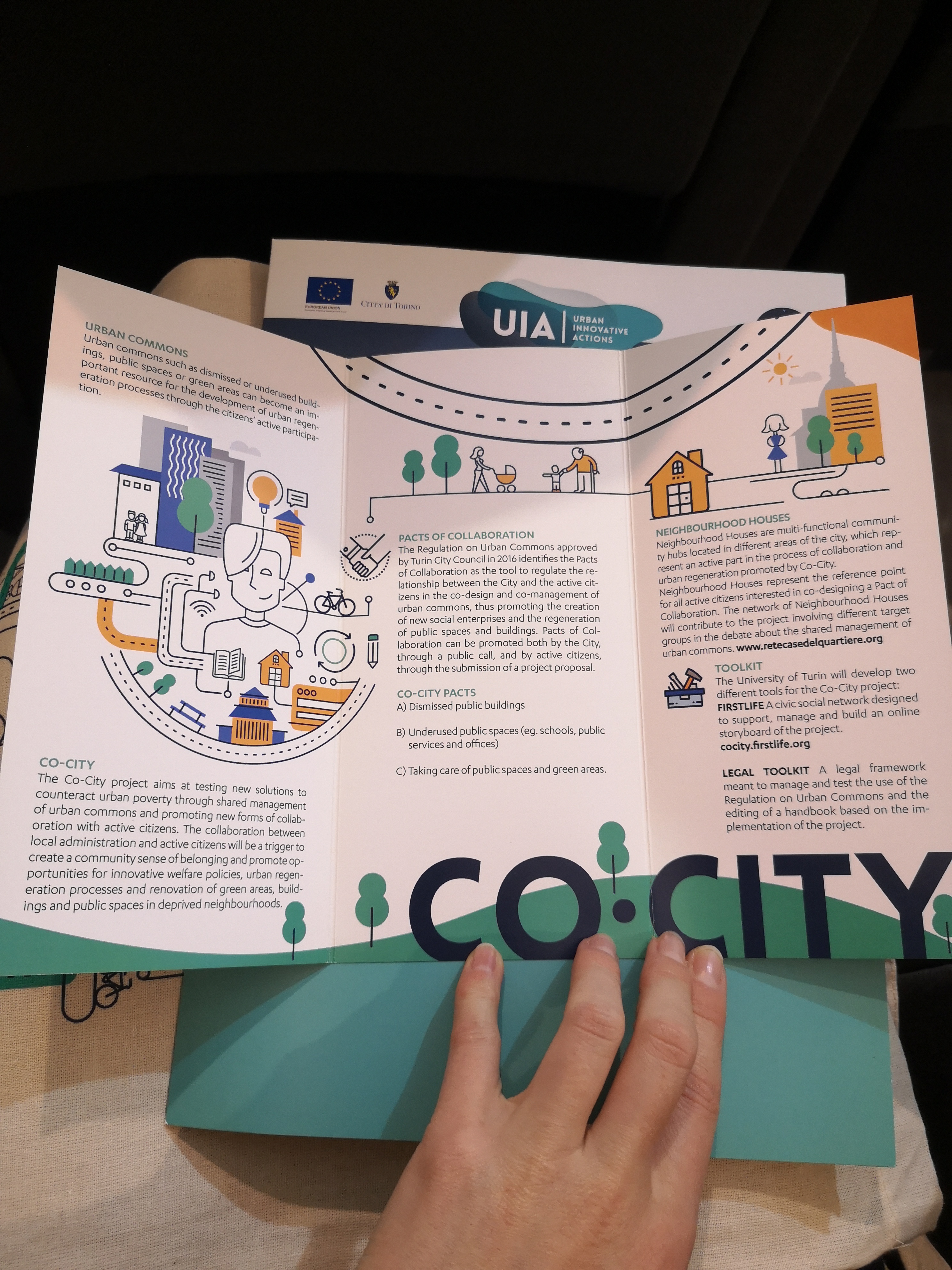
[1] Arebs is the municipal agency for the economic development of the Seresian area and is in charge of the APTBC project on behalf of the city of Seraing.
[2] “Third places, spaces of all possibilities (created) by and for every citizen in Seraing?”
[3] The notion of third place is difficult to define theoretically, because its applications have gone further than its original meaning. Today, a third place is a space that is collectively created, where people can meet, share and produce ideas and projects. It is a space of co-production and social connection.
[4] The first phase of the collective process, meant to fix the main objectives of the community centre, lasted from March to July 2021.
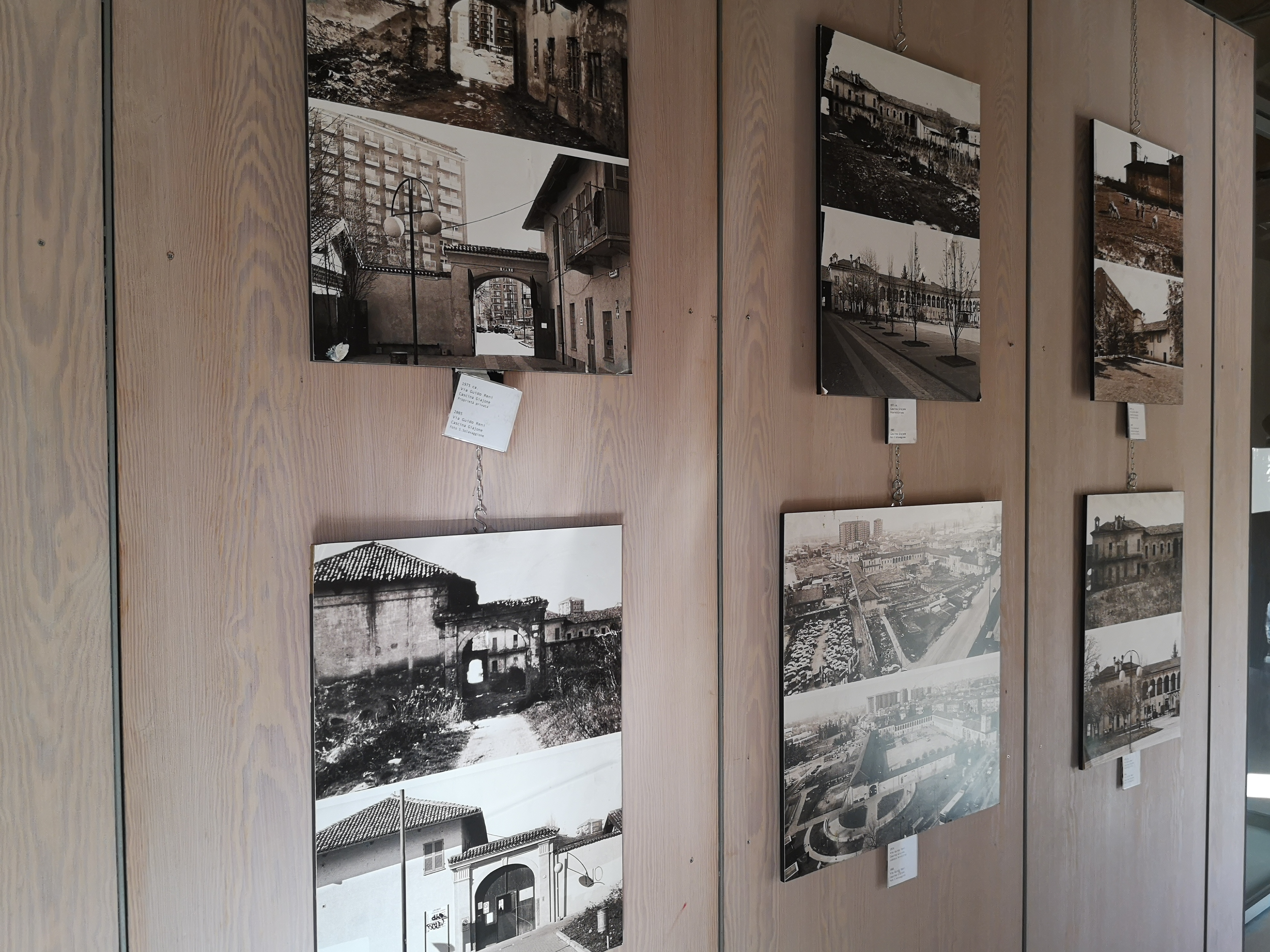
All the community hubs in Turin were born out of the assembling of some favourable conditions: an ongoing process of urban regeneration in the neighbourhood[1], the existence of a group of motivated people, a local authority eager to experiment and an active local community. In some cases, even a physical space to rehabilitate. Today these community hubs are eight spaces identified as “case di quartiere” which, despite differences, have been chosen by the municipality as representing the “Turin model” for their ability to mobilise and engage the local community, their capacity to appeal to a very broad and heterogenous audience and bring new life to a vacant building or a deprived neighbourhood. Thanks to a national award, in 2014 they could combine forces by creating a network, which aims to develop joint projects, build synergies, collectively analyse their social impacts and evolve together.
For example, I Bagni Pubblici di via Agliè was founded by a local cooperative through a public tender, initially only to offer free and hot showers to the most in need during the Winter Olympics that were hosted by the city of Turin in 2006. In order to prevent the local community from becoming hostile to a place devoted to an otherwise unwelcome population, they decided to offer also some basic services such as a helpdesk and reading evenings. At some point they also organised a neighbours festival and the success of the event pushed them to investigate further into the real needs of the community. They then developed step by step a project with volunteers from the neighbourhood that allowed the offer of activities and services to increase. The relevance of the place and the fact of being there for the inhabitants made the project grow and become a local landmark. Today they provide 15 thousands showers per year, they have a cafeteria, helpdesk, they offer a rich variety of classes and cultural activities (most of which free of charge) that are proposed or suggested by local residents.

A very different story characterises the establishment of Cascina Roccafranca, to take another example. In 2002, an ancient and dilapidated farmhouse was acquired by the city of Turin with European funding via Urban programme, with the aim to create a community hub. During the renovation works, the municipality put up a management team to start working in the neighbourhood where once the industrial firm Fiat thrived. They conducted a thorough survey to detect local needs through interviews and focus groups, and based on the results of their analysis they outlined four main themes that could be further explored inside Cascina. A series of workshops was then organised with the community around the four identified themes with the aim to develop activities and an agenda. Today they have a cafeteria, they host cultural events, classes, a helpdesk and social and educational services. Their programme, likewise every community hub in Turin, is the result of what the local residents propose and demand each year. They co-design and apply to call for projects.
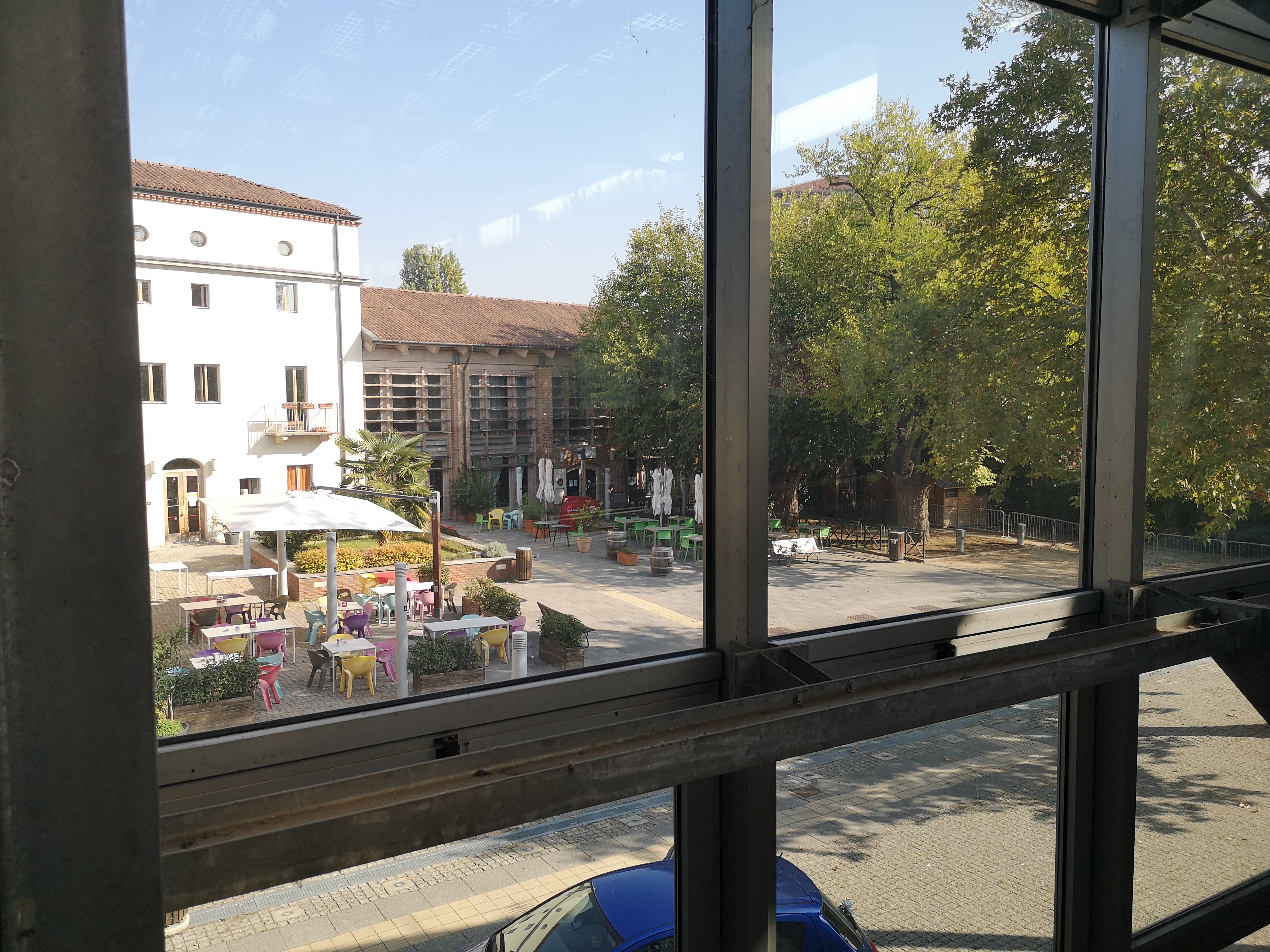
The role of the eight case di quartiere has been crucial for the Co-City project. As partners of the project, they acted as interface between the communities and the municipality for disseminating the information about the “pacts of collaboration” and assisting citizens and organisations with the design of their projects. What has been more challenging with the implementation of each pact was linked to the complexity and slowness of the institutional machine: the need to engage many different municipal services at a time and to orchestrate a mechanism anew engendered delays and requested a great effort of coordination. This work must be taken into account when a similar endeavour is engaged.
[1] Of the four “case di quartiere” we talked to Casa di Quartiere San Salvario was created without an opportunity coming from a local regeneration process.
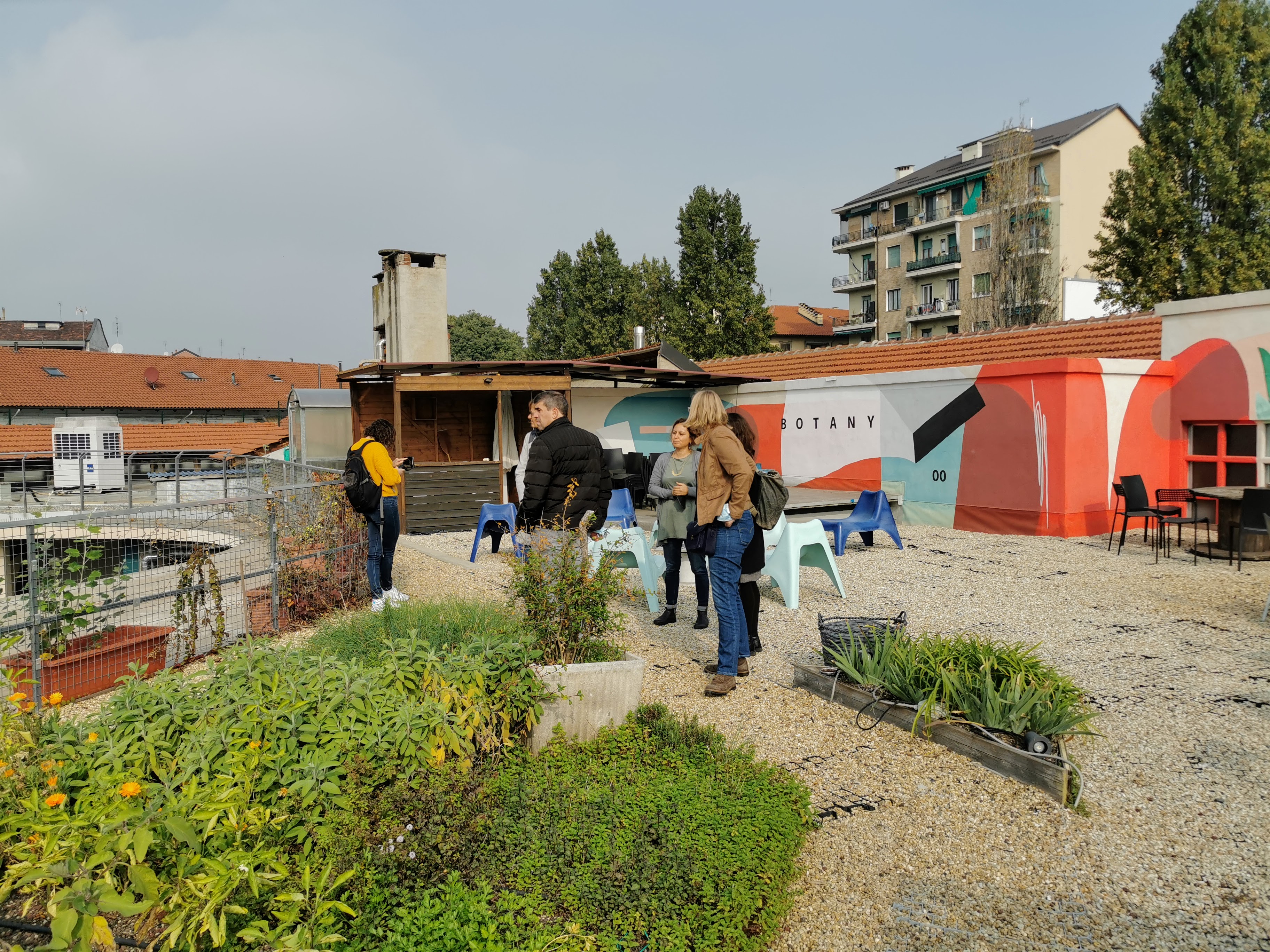

Visiting Turin, a few of its community hubs and a couple of projects - such as Beeozanam or Spaccio di Cultura, which are born out of a pact of collaboration, we learnt some interesting lessons for Seraing.[1]
Fundraising. There is not a unique management model through which a community hub is supposed to adhere. Instead, a very specific mode of functioning must be designed and tailored according to existing conditions, both economic and social. The management team, together with local authorities, should review every possible source of financing, both public and private, while sticking carefully to an ethic manifesto which should be shared and transparent. Taking into consideration the idea of hosting also for-profit organisations is certainly an option for the viability of a community hub in the long term. For instance, every hub hosts a cafeteria, which brings economic resources, attracts a variety of public and might contribute to the occupation of the place when other activities are not running.
Hybridising. Each community hubs we have met has been able to build a network of citizens, no-profit organisations, social companies, cooperatives, local businesses, institutions, that contributes with energies, synergies, ideas and economic resources to a space which needs to be relentlessly evolving and innovating.
Attuning. Before starting the project, each hub dedicated some time to investigate and learn from their community with the aim to identify needs and gaps in the neighbourhood but also to find and engage those residents who could be engaged and more likely to play an active role. The idea is that the community hub should be representative of its neighbourhood; it should look like its own community not the other way round. As Elena Carmagnani from Beeozanam admits, “It’s a hard work to identify your community’s needs. It’s a day-to-day effort.”
Co-designing. Every activity of a community hub happens because there is someone from the community who proposes and realises it. This way, the community itself draws up the programme, while the management team is there to support and provide the logistics that makes it happen. If the management team identifies a need in the neighbourhood that is not answered to through the programme, they work to address this need through their own projects, which constitute a part of their institutional activity. Roberto Arnaudo, from Casa del Quartiere San Salvario, explains that “The idea is not to have just a place to fill, but to co-produce projects instead while helping to empower local organisations and residents.” From a methodological point of view, the team has its political and institutional goals, i.e. the development of relationships with local stakeholders, the encouragement of citizens’ active participation, the promotion of sustainable lifestyles and a cultural offer that is open and inclusive, as Stefania De Masi from Cascina Roccafranca illustrates. These goals, nevertheless, are reached by encouraging the development of residents’ own capacities and possibilities.
Upscaling. When a process is launched and is strongly backed and when all the involved actors believe it and are motivated, the change happens in the medium term and the connections that are created multiply. Many conditions should be met for the process to be positively triggered: a group of people who share a vision; a strong institutional endorsement and political support; an active community; a range of possible donors and investors; another ongoing innovative process to connect with.
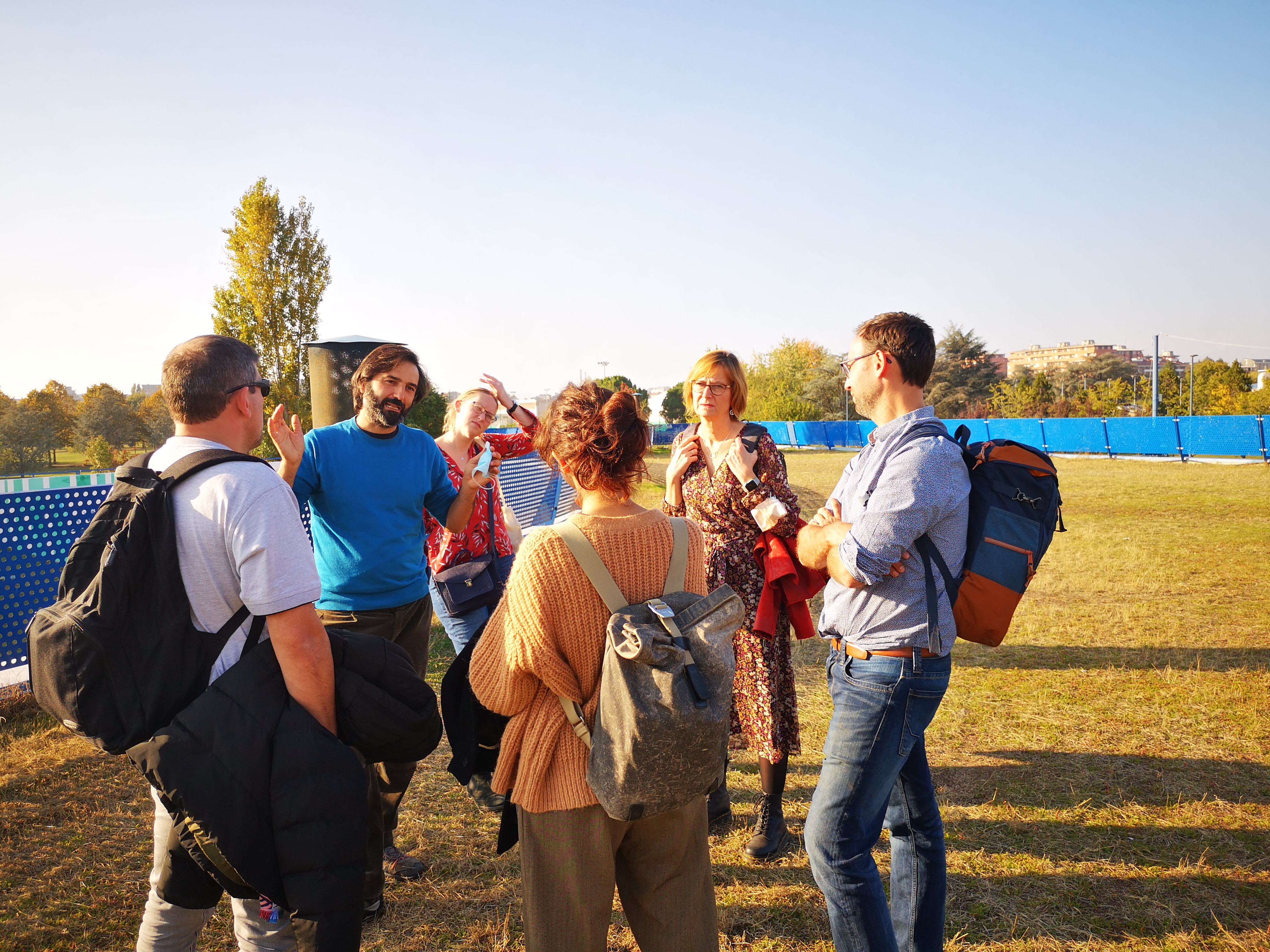

[1] Our sincere thanks and deepest gratitude go to all the people we met, who welcomed our group, devoted time to share with us their interesting stories and inspired us so much: (in order of rendez-vous) Elena Carmagnani and Elen Ganio (Beeozanam), Giovanni Ferrero and Laura Socci (Co-City), Erika Mattarella (Bagni Pubblici di via Agliè), Fabrizio Giacone and Stefania De Masi (Cascina Roccafranca), Elena Carli and Maurizio Vico (Casa nel Parco), Roberto Arnaudo (San Salvario).
Visiting other projects has been inspiring and exciting for everyone and it has opened more possibilities to reflect and share idea within the municipality of Seraing and the broader team who is working on the co-designing of the community hubs for APTBC. What we have learnt, also, is that implementing such spaces for and with the community is a long and demanding process. A community hub does not emerge from scratch. It is built brick by brick through stages of test, trial, adaptation, problem solving, analysis and adjustment. The three years lifetime of APTBC are a short period for the accomplishment of a finalised project but a great opportunity to set up a process which can later be carried on by a network of engaged and inspired actors.
About this resource
The Urban Innovative Actions (UIA) is a European Union initiative that provided funding to urban areas across Europe to test new and unproven solutions to urban challenges. The initiative had a total ERDF budget of €372 million for 2014-2020.
Similar content




